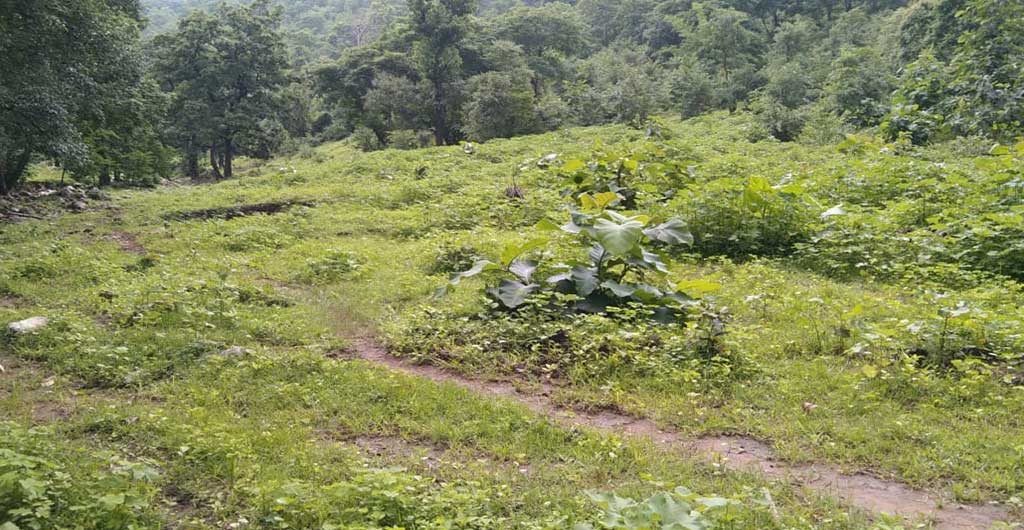Forests Rights Act 2006
The Scheduled Tribes and Other Traditional Forest Dwellers (Recognition of Forest Rights) Act, 2006 is an important piece of forest legislation passed in India on December 18, 2006 but came into force on January 1, 2008, with appropriate rules. The FRA provides restitution of individual rights to cultivated land in forested landscapes and collective rights to control, manage and use forests and its resources as common property. The Ministry of Tribal Affairs is the Nodal Department for implementation of the Act. The Act recognizes and vests the forest rights and occupation in forest land in Forest Dwelling Scheduled Tribes (FDST) and Other Traditional Forest Dwellers (OTFD)who have been residing in such forests for generations. The act also establishes the responsibilities and authority for sustainable use, conservation of biodiversity, and maintenance of ecological balance. It aims at strengthening the conservation regime of the forests while ensuring the livelihood and food security of the FDST and OTFD.
The act gives FDST and OTFD the right to ownership of land that is actually being cultivated by the tribals or forest dwellers subject to a maximum of 4 hectares. The title is nontransferrable and nonsaleable.
Besides, the Act also provides Community Rights and Community Forest Resource Rights. The Gram Sabha is empowered to justify the claims at the first level followed by its subsequent processing at the Sub Division and District Level by the respective committees formed with Tribal Development, Forest and Revenue departments. The Act mandates the State Government to constitute a State Level Monitoring Committee to monitor the process of recognition and vesting of forest rights and to submit to the nodal agency such returns and reports as may be called for by that agency. the Sub-Divisional Level Committee, the District Level Committee and the State Level Monitoring Committee shall consist of officers of the department of Revenue, Forest and Tribal Affairs of the State Government and three
members of the Panchayati Raj Institutions at the appropriate level, appointed by the respective Panchayati Raj Institutions, of whom two shall be the Scheduled Tribe members and at least one shall be a woman, as may be
prescribed.
As per the data of Ministry of Tribal Affairs, Government of India
- 19,74,841 Individual Forest Rights (IFR) and
- 1,00946 Community Rights are distributed so far in the country.
- Area vested under IFR amounts to 17,18,000 ha and that under CFR is 47,06,000 Ha.
The Scheduled Tribes and Other Traditional Forest Dwellers (Recognition of Forest Rights) Rules, 2008, as amended by the Ministry of Tribal Affairs in 2012, under Rule 4 i1) (e), provide that Gram Sabha shall constitute “Committees for the protection of wildlife, forest and biodiversity from amongst its members, in order to carry out the provisions of section 5 of the Act.” However, it is quite challenging to find competent persons within the Gram Sabha who can plan for creating a balance between the conservation and livelihood of the community, manage and wildlife and biodiversity of the Community Forest areas.
The FRA demands the right holders to ensure that adjoining catchments area, water source, and other ecological sensitive areas are adequately protected. Such catchment area will not be necessarily confined to a single CFR (Community Forest Resource) and will be spread over cluster of Gram Sabha.
It is also important to create a synergy with other acts like PESA 1996, Biological Diversity Act, 2002 Wild Life Protection Act 1972, Forest Conservation Act 1980 etc.
The level of awareness towards the Act is still low both among the government functionaries and the communities. It has caused delay in proper implementation of the Act.
Even after providing the land rights in many cases land title holders are not being able to get the desired benefits of securing their livelihood due to the marginal nature of the land and their lack of capacity for investment to develop the land. Hence, it requires a comprehensive approach to develop the capacity of the farmers to adopt sustainable farming practices and convergence of resources for development of the land and other associated facilities like sources of irrigation.
The capacity of the Gram Sabha is to be developed to empower them for planning and management of the forest and biodiversity. Here, the forest department can play a key facilitative role for developing the capacity of the community for planning, implementation and monitoring the forest and biodiversity.




